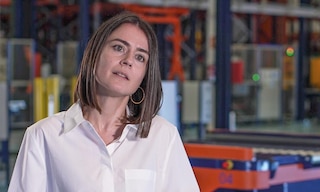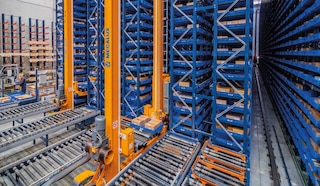
Interview with Selene Silvestri, Research Scientist at MIT CTL
“We’re developing a solution that integrates inventory management with order fulfillment”
About the research project
Among other aspects related to logistics and technology, the research collaboration between the Massachusetts Institute of Technology and Mecalux aims to optimize distributed order management across multiple warehouses and stores. Selene Silvestri, Research Scientist at MIT’s Center for Transportation & Logistics, is taking part in this initiative within the Intelligent Logistics Systems Lab. The goal is to harness prescriptive intelligence and develop genetic algorithms that streamline inventory management across various locations.
Mecalux interviews Selene Silvestri, a Research Scientist at MIT CTL, to learn more about the distributed order management project she is working on as part of the collaboration between MIT and Mecalux.
-
How will the joint project between MIT and Mecalux help organize stock across the distribution network?
Allocating and managing inventory across warehouses and stores is a highly complex process. Most companies today rely on simplified assumptions, rule-based approaches, or human expertise. The problem is that these methods lead to stockouts, inefficient costs, waste, and unnecessary emissions. The inventory management project that we’re working on in collaboration with Mecalux is developing a learning-based solution that will allow businesses to understand where to allocate their items. In other words, it helps determine the right time, place, and quantity of goods to position across the distribution network.
From the thousands of options considered, the algorithm selects the one that best balances costs and service level
-
How does this research incorporate prescriptive intelligence?
With prescriptive intelligence, we can identify the best data-driven strategies for managing and allocating products across supply chain networks. By combining historical data analysis, inventory management theory, and advanced optimization algorithms, our methods are designed to help companies make the best decisions.
We use simulations and evolutionary algorithms that enable us to analyze thousands of different scenarios, meaning multiple strategies to optimize inventory across the supply chain. From all the options considered, the algorithm selects the one that best balances costs and service level. The idea is that businesses will be able to utilize this algorithm in their operations, thus eliminating stockouts, reducing inventory excess, and improving the overall performance of their supply chain.
-
You employ bio-inspired algorithms. Can you give an example?

In the coming years, businesses will increasingly adopt solutions that leverage AI and learning-based algorithms In particular, we’re developing a genetic algorithm that mimics the natural evolution of a population. These types of algorithms are highly effective for solving large-scale optimization problems.
In the context of inventory management, this means starting from a set of possible item allocations across the supply chain network. From there, the algorithm applies mechanisms like crossover, recombination, and reproduction to the initial population to generate new solutions. These “children” retain certain characteristics of their parent allocations while introducing new variations. Over time, the algorithm evolves toward the feasible solutions that best balance cost and service, progressively converging on near-optimal allocation strategies.
-
How will this project enhance inventory allocation for companies?
We firmly believe that, in the coming years, businesses will increasingly adopt solutions that leverage AI and learning-based algorithms. We aim to integrate these findings with those from another research project we’re also collaborating on with Mecalux, focused on fine-tuning order fulfillment. We’re developing a technological solution that integrates inventory management with the fulfillment process. Our goal is to achieve end-to-end visibility of the entire supply chain and its flows, from suppliers to customers. This approach will avoid tools that optimize inventory without considering demand, as well as solutions that prioritize order fulfillment while overlooking product availability.
